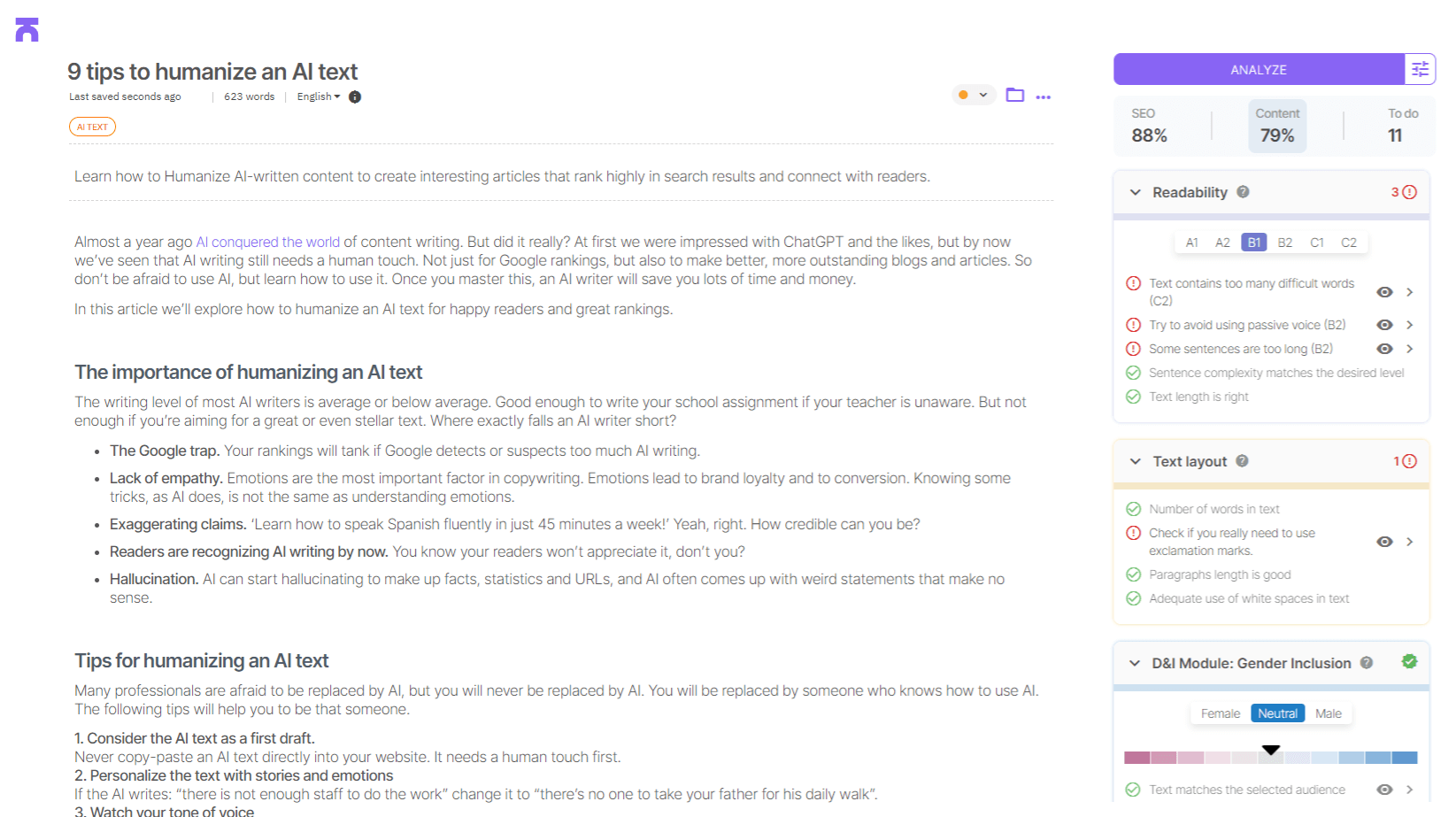How can I use the editor?
The editor is your main working space within the Textmetrics platform. Watch the video below or keep reading for more information on how to use the Textmetrics editor.
Watch video
Watch this video for an introduction on how to use the editor, and a rundown of the different features you can access there:
Let’s take a look
The editor, shown in the image below, is the place where you can start creating your content.
In the text fields near the top of the screen, you can enter the title of your page, a page description, and your keyword/synonyms. More information on the SEO section of the editor can be found here.
The body text in the editor is your actual working space. This is where you’ll write, edit, and improve your content.
You can type or paste your text into the main field, underneath the page description. If you want to optimize a text you have written earlier, it is also possible to import documents or URLs directly into Textmetrics.
How to use the toolbar
Like with any text editor, Textmetrics offers a handy toolbar to help you format your text. Here, you can:
- Format paragraphs or headings (H1-H6)
- Bold, italicize, underline or strikethrough your text
- Apply numbered or bullet lists
- Change your text alignment
- Insert hyperlinks and images
- Add tables
- Copy HTML to clipboard
Analyze your content
On the right, you will see the suggestions on how to optimize your text. Textmetrics assesses the SEO performance in real time. This means that while you edit, your SEO score and the optimization suggestions that are given will change automatically.
To view Content Quality, press the Analyze button to see the things you may want to improve.
Remember: once you’ve edited your text, you’ll have to click Analyze again to update the content score and suggestions.
The content score is based on a combination of the different checks, such as readability (language level), target audience, and more. You can adjust the rule settings according to the text you’re writing or based on your intended audience. These settings affect the way the score is calculated. For instance, if your text should be easy to read for everyone, select B1 as your desired language level. But if you’re writing for a professional audience, you may want to change this setting to B2 or C1.
Other settings you can adjust are: Target Audience (masculine, neutral or feminine language) and Sentiment (positive, neutral, negative tone of voice).
Furthermore, you can choose the kind of analysis you want Textmetrics to perform. Each category has a toggle which you can switch on or off. When off, these rules will not be taken into account during the content analysis. This way, you are in charge of what checks your score is based on.
Other features
We’ve handled the SEO & Content tab, but there is much more to be discovered. A rundown of the different features is given below.
Share:
Create a readonly page that you can share externally.
Translate:
Translate your page into multiple languages.
Analyze Keyword:
Use the Analyze Keyword to enter or change your keywords – here you’ll also find a handy tool which can tell you what keywords are best to use.
Page Tracker:
You can use the Page Tracker option to track your page’s Google position over time.
Import & Export:
Under Import & Export you can import an existing URL into the editor. Furthermore, you can export your optimized page in different formats. Have a look at our other articles to learn more about importing pages and exporting your content.
Accessibility:
Check your web page for Accessibility-issues (WCAG)
Density:
Check which keywords are used, and in what frequency (Keyword Density)
Concepts:
Extract keywords from your page or a URL
Version History:
This can be used to restore previous versions of your page.
